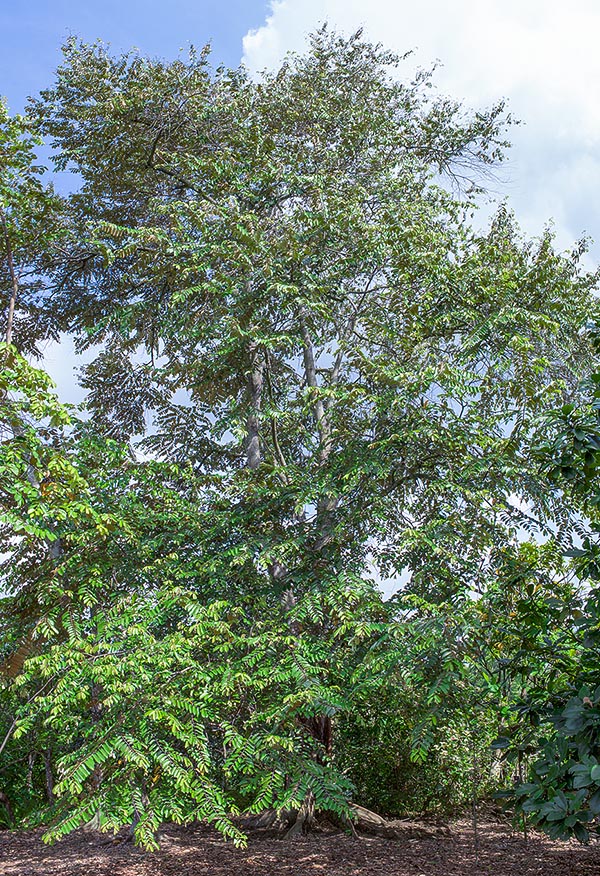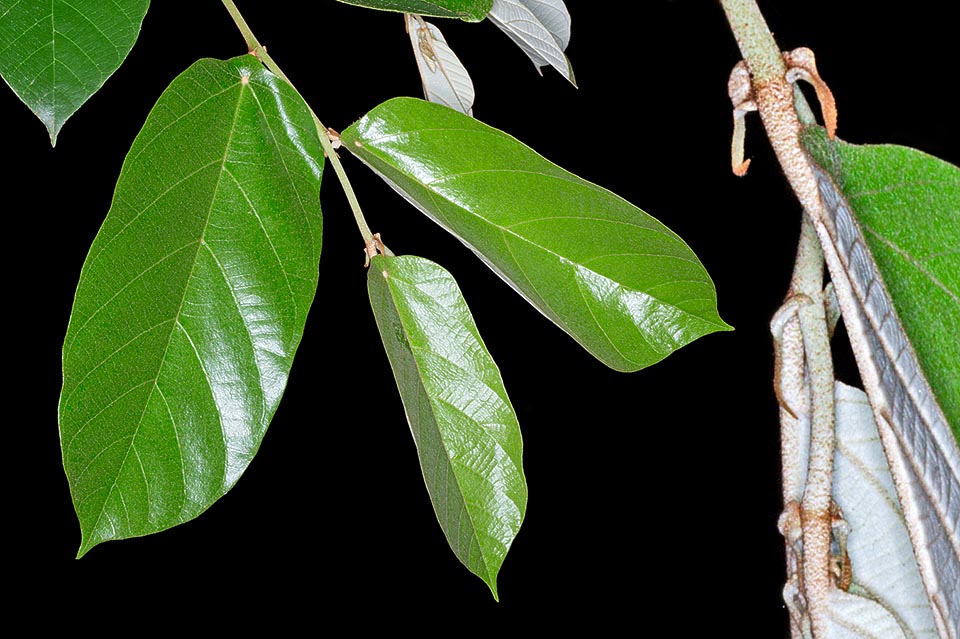Family : Malvaceae

Text © Pietro Puccio

English translation by Mario Beltramini

Majestic evergreen of South-East Asia of Dipterocarpaceae forests, Pterospermum javanicum is a tree that can be 50 m tall in nature, with an even one metre wide trunk and solid tabular roots © G. Mazza
The name of the genus comes from the combination of the Greek substantives “πτερόν” (pteron) = wing and σπέρμα” (sperma) = semen, with obvious reference; the name of the species is the Latin adjective “javanicus, a, um” = of Java, with reference to one of its places of origin.
Common names: bolang (Bali); bayur, bayur laki, bayur merah (Borneo); balang, cerlang, wadang (Java); bayor, letop-letop, litak, (Malaysia); nwa-labyin (Myanmar); bangero, buli, lero (Sulawesi); bayok (Philippines); bayur, bayur burung, cemerlang, merilang (Sumatra).
The Pterospermum javanicum Jungh. (1840) is an evergreen tree up to more than 50 m tall in the old specimens in nature, with erect trunk, of up to about 1 m of diameter, often provided at the base of tabular roots (flat roots similar to buttresses) up to 2 m tall, and brown-greyish bark that with the time tends to fissure and flake off.
The leaves, on a 0,4-0,6 cm long tomentose petiole, are alternate, simple, ovate with pointed apex, asymmetrical base and entire margin, waved or toothed, often peltate in the young plants, of glossy green colour above, covered by white brownish tomentum below, 5-14 cm long and 3-7 cm broad.
The stipules, thin, pointed, about 1 cm long, present at the base a small cup with the inner surface covered by pearly glands that attract the ants.
Inflorescences, on a 1-1,5 cm long peduncle, axillar or subterminal with 1-3 hermaphroditic flowers, of about 10 cm of diameter, with linear sepals with pointed apex, 5-6,5 cm long and 0,5 cm broad, yellowish white and covered externally by pale brown tomentum, 5 oblong-spatulate petals, white, 3-3,5 cm long and 3-4 cm broad, and pentalocular superior ovary. The fruits are fusiform woody capsules, 5-12 cm long and of 3-4 cm of diameter, covered by a rust coloured tomentum, dehiscent from the apex to the base in five lodges, containing numerous seeds provided on a side with a long wing that favours the dispersion by means of the wind. It reproduces by seed, that does not have a long lasting germinability, in draining loam maintained humid at the temperature of 24-26 °C.

Leaves with about 1 cm stipules. They have at the base a small cup covered inside by pearly glands that attract the ants. The bark has medicinal virtues © G. Mazza
→ To appreciate the biodiversity within the MALVACEAE family please click here.
